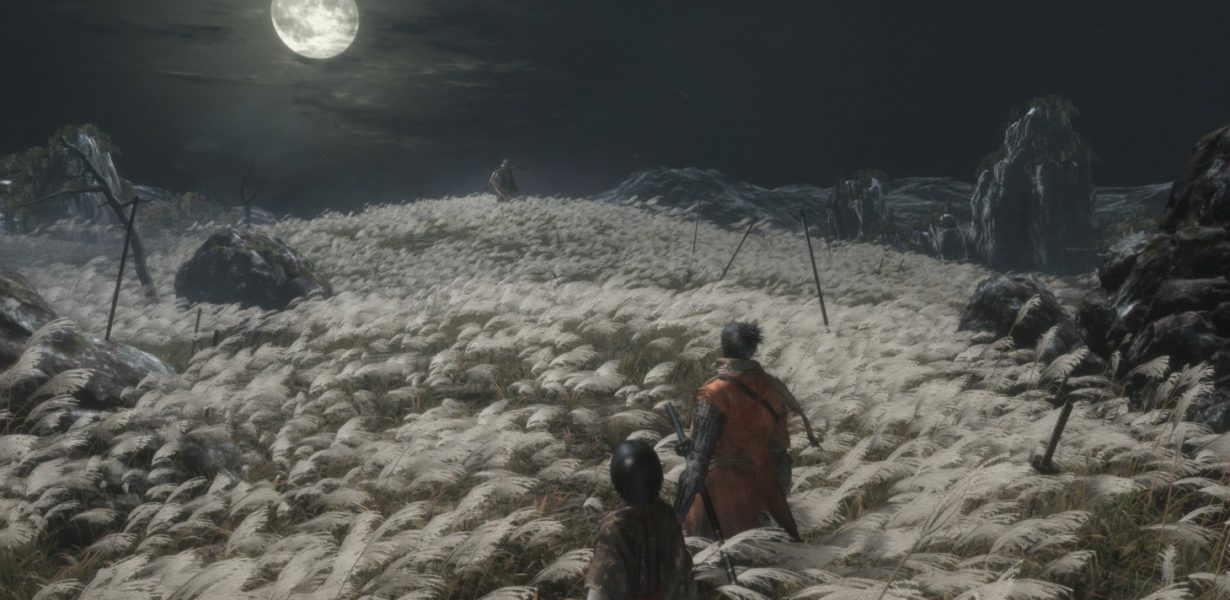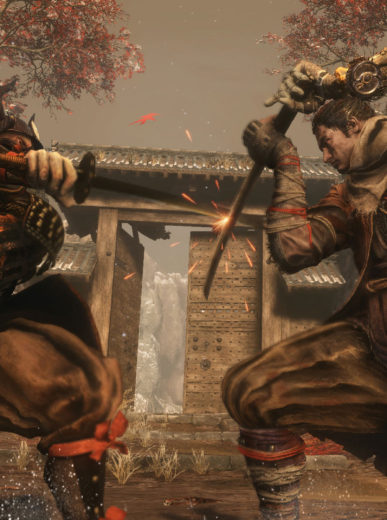I consider myself to be a pretty decent Soulsborne player. Not the greatest perhaps, but decent enough to get by most challenges on my own. Sekiro: Shadows Die Twice, the latest action game by FromSoftware, is making me question my worth as a gamer.
At first glance, Sekiro’s got the bones and the structure of your typical Souls game. Recursive level design, bonfire-like checkpoints, you lose half your experience and money upon death with no way to pick them again… Wait, not that last bit.
Whereas in previous FromSoft games you’d have that valuable second chance of running back to your point of death and picking up all the experience you lost, Sekiro strips that from you completely. And that is probably the single most major factor that’s throwing me off completely.
Losing half your experience and money doesn’t sound too bad; it can’t be worse than losing everything, right? But imagine this: you’re the kind of player who needs to die to a boss over and over again while you’re in the process of learning its patterns. Then throw in the fact that you’re losing 50% of all you have with each death, and dying becomes painful and punishing.
Sekiro features a new mechanic called Unseen Aid, which gives you a percentage chance of retaining everything you lost upon death. But here’s the catch: the more you die, the more the mysterious Dragonrot disease spreads in the world, and the lower your chances of actually receiving Unseen Aid. It’s a cruel and vicious cycle.
Now, Sekiro does alleviate this issue a little by letting you purchase coin pouches, which essentially allows you to bank in your money before attempting a boss, but it’s still frightening.
The other major factor that’s completely throwing me off is that you’re not, in fact, supposed to dodge enemy attacks. On the contrary, you’re supposed to just stand there and take the attack, and deflect it at the perfect moment to break an enemy’s Posture.
Sekiro completely does away with the stamina bar, and it’s all about Posture now. You won’t be looking at an enemy’s HP bar all that much in this game; you’ll be focused on deflecting attacks to build up your enemy’s Posture bar, then scoring an instant kill Deathblow on them.
So much of Sekiro’s difficulty stems from my having to basically un-learn everything I’d learned from Dark Souls and Bloodborne over the past few years. It’s a lot of muscle memory to try to ignore while playing, and that’s probably the biggest challenge most Soulsborne veterans will face when stepping into the shoes of Wolf.
At the time of writing, I’m about 15 hours into Sekiro and most of that time was spent frantically dodging attacks left and right while staring in despair at the pitiful amount of Vitality damage I was dealing to bosses with my puny sword.
Now I don’t want to jinx myself, but I feel like I’ve finally made a breakthrough after my latest boss encounter in the game. After 20-odd attempts and an hour of me beating my head against the wall, suddenly I was in the zone.
Wolf was dodging the Perilous Attacks when necessary, going in for hits when it was safe, and engaging in a dance of guards and parries the rest of the time. Wolf would strike the boss down with Shurikens when appropriate, and before I knew it, the boss was down.
Sekiro: Shadows Die Twice is very much its own thing, and it’s a completely different ball game from what Soulsborne fans are used to. After 15 hours of being utterly discouraged by how awful I was at the game, it finally feels like I’m starting to get into the rhythm of things, but man, it sure did take a long time to get to this point.


There are no comments.